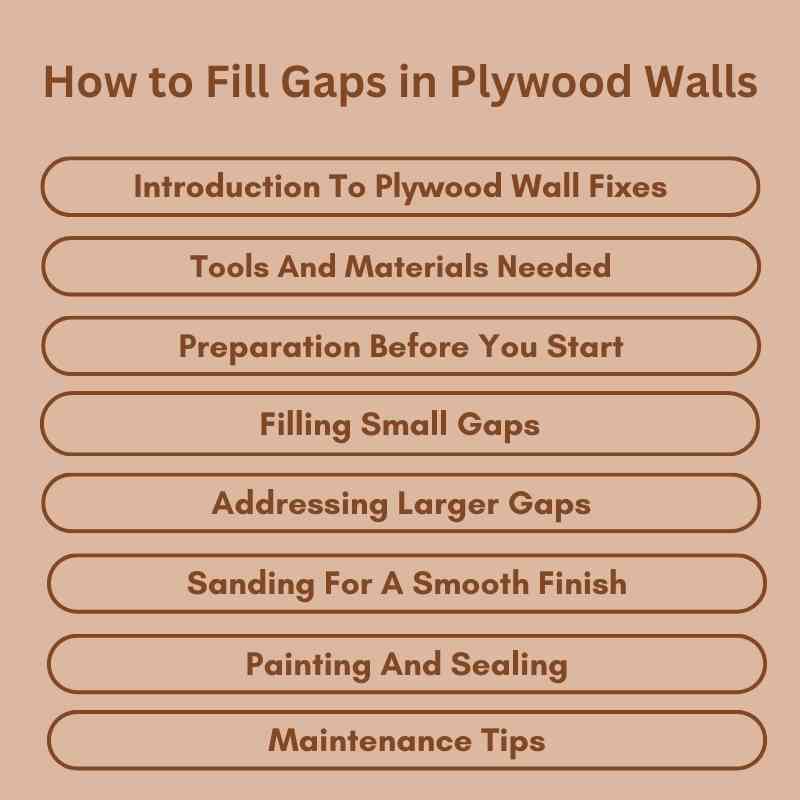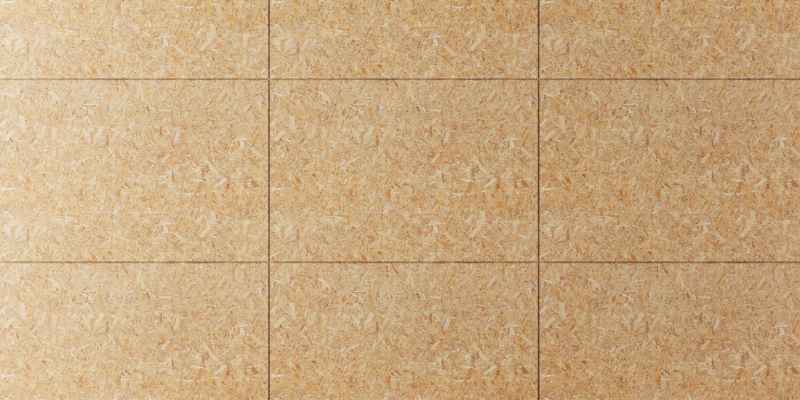To fill gaps in plywood walls, use wood filler or caulk for small spaces. For larger gaps, consider adding strips of plywood or drywall.
Filling gaps in plywood walls is essential for both aesthetics and insulation. Gaps can lead to drafts and moisture issues, compromising the integrity of your structure. This task is straightforward and can be accomplished with basic materials and tools. Properly sealing these gaps enhances the overall appearance and energy efficiency of your space.
Whether you’re working on a new construction project or renovating an existing space, addressing these gaps is crucial. Follow these simple steps to ensure a clean and professional finish that will stand the test of time. Let’s explore effective methods to achieve seamless plywood walls.
Introduction To Plywood Wall Fixes
Filling gaps in plywood walls ensures a smooth and polished look. A seamless finish improves the overall appearance of any room. It also helps with insulation and reduces drafts. Visible gaps can occur due to changes in temperature or humidity.
Common reasons for gaps include:
- Improper installation techniques
- Natural wood expansion and contraction
- Wear and tear over time
- Use of low-quality plywood
Addressing these issues is crucial for maintaining the integrity of the walls. Regular checks can help spot gaps early on. Fill gaps promptly for the best results.

Tools And Materials Needed
To fill gaps in plywood walls, a few basic tools are essential. Gather a measuring tape, utility knife, and sandpaper. A putty knife will help apply the filler. Use a paintbrush for touch-ups.
Choosing the right filler is crucial. Options include wood filler, spackle, and caulk. Wood filler is great for larger gaps. Spackle works well for small holes. Caulk is best for seams and joints.
| Tool/Material | Purpose |
|---|---|
| Measuring Tape | Measure gaps accurately |
| Utility Knife | Cut filler to size |
| Sandpaper | Smooth surfaces after filling |
| Putty Knife | Apply filler evenly |
| Paintbrush | Touch up with paint |
Preparation Before You Start
Start by cleaning the surface of the plywood walls. Use a damp cloth to remove dust and dirt. This helps materials stick better.
Ensure the area is well-ventilated. Open windows or doors for fresh air. This is crucial for safety.
Wear safety goggles to protect your eyes. Use a mask to avoid inhaling dust or fumes. Keep children and pets away from the workspace.
Gather all the necessary tools and materials. Having everything ready will make the process smoother.
Filling Small Gaps
To fill small gaps in plywood walls, choose the right product. Options include wood filler, caulk, or spackling paste. Each product works well for specific gap sizes. Wood filler is great for larger gaps, while caulk is better for small cracks.
For step-by-step application, follow these simple instructions:
- Clean the gap area with a brush.
- Apply the chosen product using a putty knife.
- Smooth the surface for a clean finish.
- Allow it to dry completely.
- Sand the area lightly for a seamless look.
These steps ensure a professional finish for your plywood walls.
Addressing Larger Gaps
Addressing larger gaps in plywood walls can be tricky. Epoxy works well for filling gaps. It creates a strong bond and is easy to apply. Use wood strips for wider gaps. They provide better support and a more natural look.
For application technique, start by cleaning the gap. Remove any dust or debris. Mix the epoxy according to package instructions. Apply it with a putty knife for smoothness. If using wood strips, cut them to size. Secure them with wood glue or screws.
Always allow enough drying time. This ensures a strong hold. Sand the surface once dry for a smooth finish. Paint or stain to match your plywood walls.
Sanding For A Smooth Finish
Choosing the right sandpaper is important for a smooth finish. Use coarse grit sandpaper to remove rough spots. Then switch to medium grit for an even surface. Finally, use fine grit for a smooth touch.
Techniques for achieving an even surface include:
- Always sand in the same direction as the wood grain.
- Apply even pressure on the sandpaper.
- Use a sanding block for flat surfaces.
- Keep the sandpaper clean by removing dust often.
- Check your work frequently to ensure a consistent finish.
Painting And Sealing
To fill gaps in plywood walls, choose the right paint color. This helps blend the repairs. Use a color sample to ensure a perfect match. Test the paint on a small area first.
Best practices for sealing include using a quality sealant. Apply the sealant evenly for the best results. Let it dry completely before painting. This ensures a smooth finish.
Check for any remaining gaps after sealing. Reapply sealant if necessary. Always clean the surface before applying paint. This step helps the paint stick better.
Maintenance Tips
Regularly check for new gaps in plywood walls. Inspect all seams and joints carefully. Look for signs of moisture or damage. Early detection helps prevent bigger issues.
For long-term care, keep the walls clean and dry. Use a soft cloth to remove dust. Apply a sealant every few years to protect against moisture. This simple step can extend the life of your plywood walls.
Monitor the humidity levels in your space. High humidity can lead to warping or gaps. A dehumidifier can help maintain a stable environment.

Frequently Asked Questions
How Do You Fill Gaps In Plywood Walls?
To fill gaps in plywood walls, you can use wood filler or caulk. Start by cleaning the gap area. Apply the filler or caulk using a putty knife or caulking gun. Smooth it out and let it dry completely. Finally, sand the surface for a seamless finish.
What Materials Are Best For Plywood Wall Gaps?
The best materials for filling plywood wall gaps include wood filler, caulk, and spackle. Wood filler is ideal for larger gaps and cracks. Caulk works well for smaller gaps, especially around edges. Spackle can be used for minor imperfections. Choose based on the gap size and location.
Can I Use Paint To Fill Plywood Gaps?
While paint can cover minor gaps, it’s not a substitute for proper fillers. Using paint alone may lead to uneven surfaces. It’s best to fill gaps first with wood filler or caulk. After that, paint over the filled areas for a polished look.
How Do I Prepare Plywood Before Filling Gaps?
Preparing plywood involves cleaning the surface and identifying gaps. Use a damp cloth to remove dust and debris. Inspect the plywood for any larger holes or cracks. For best results, sand rough edges lightly to ensure smooth application of your filler material.
Conclusion
Filling gaps in plywood walls enhances both aesthetics and insulation. Choose the right materials for a seamless finish. Regular maintenance will keep your walls looking their best. With these tips, your project will be successful. Enjoy the satisfaction of a polished, gap-free wall that elevates your space.
Happy DIYing!

